While I waited for my
IN-18 breakout boards to arrive, I got to work on figuring out how I was going to drive them. I know common 74141 nixie drivers won't work, so I need another solution. I found a video over at the
EEVblog that showed that the TPIC6B595 could be used to drive nixies without the need for transistors, so I figured I'd go for it.
I’ve been messing with this for a few days and I was really scratching my head on how to shift out the data. With one 74595 shift register and two 74141 nixie drivers, it's dead easy. You just shift out 8 bits: 4 BCD values for each nixie. You just then connect 4 lines to each 74141 and you’re good.
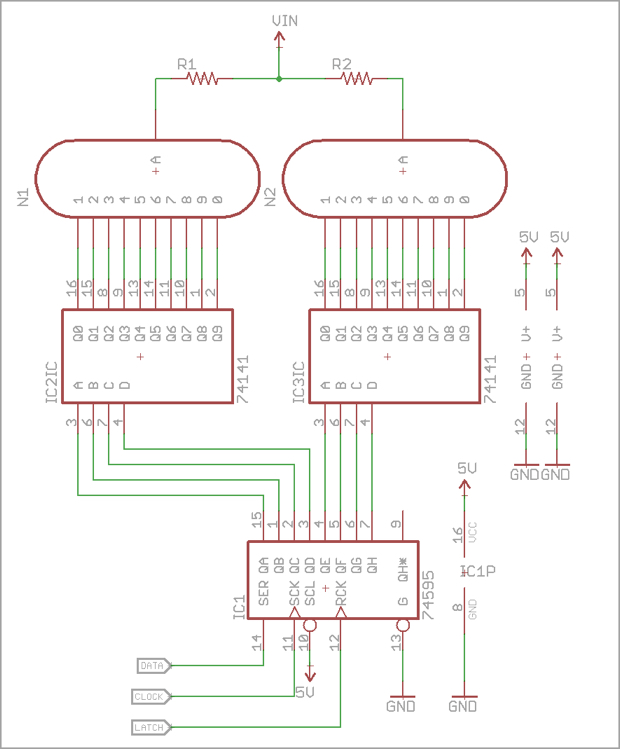
If you skip the 74141s, then you only have 8 outputs on the shift register, but you need 10 for the nixie. So you need a second shift register for 2 more outputs. So in the end, you need 3 shift registers for 2 nixies. (24 outputs: 20 used, 4 unused).
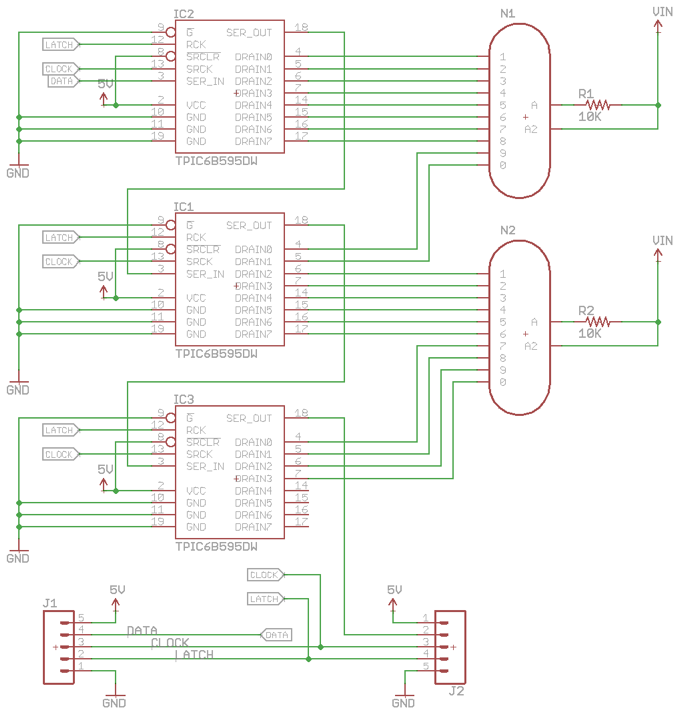
I decided to breadboard a couple TPIC6B595s to see if I could get them to shift out some data.
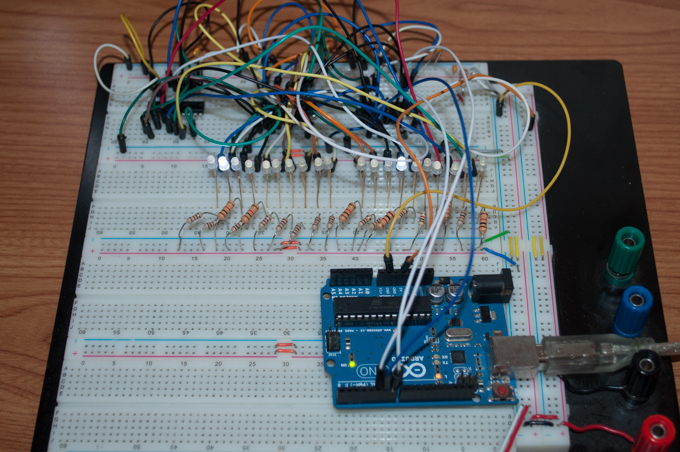
Luckily, they work just like the 74HC595s. I found shifting out 8 bits to be easy enough. There's plenty of tutorials online for that.
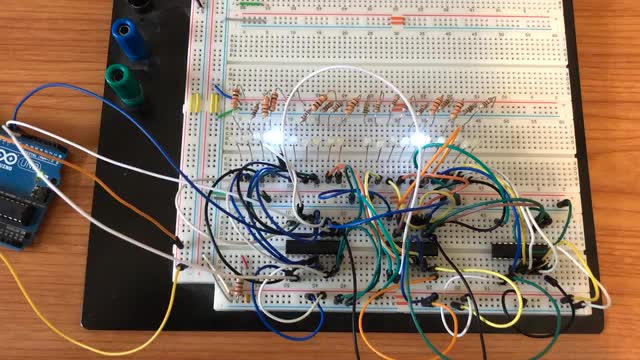
When sharing multiple nixies on a single chip, and splitting nixies between two chips, and having unused outputs, how do you shift that out? I’ve been wrestling with it since yesterday. Very confusing. I managed to find someone on Twitter who did something similar. I sent him a tweet and he was nice enough to share his source code. Some of it’s a little over my head, but I managed to figure out enough to get it to do something.
Here’s a video showing the tens and ones counting from 0 to 99.
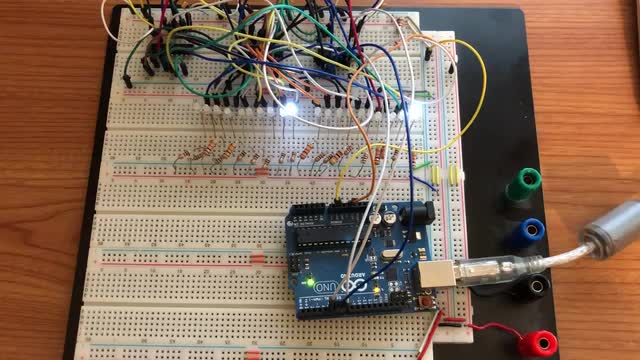
With a little trial and error I was able to connect an additional 20 LEDs and reconfigure the code to shift out the data to display hours and minutes.
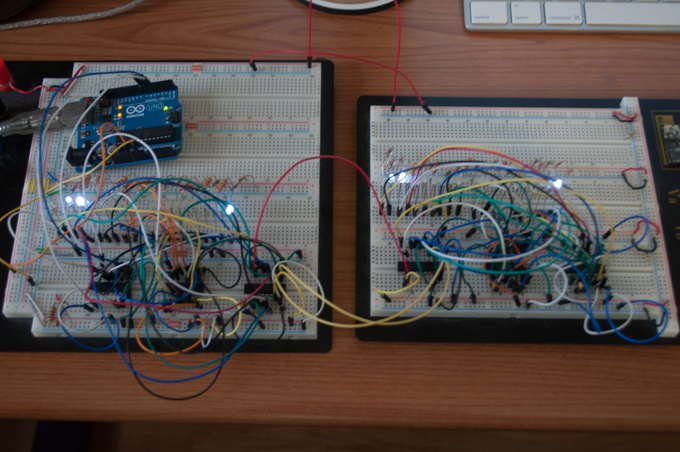
I then went for broke and added yet another 20 LEDs for seconds. It took a little tweaking, but I managed to figure it out how to shift out hours, minutes, and seconds. That's 72 bits!
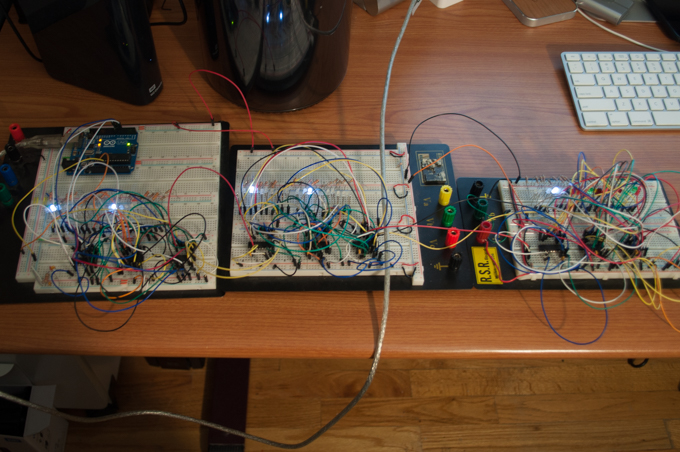
So in theory I should just be able to swap the LEDs out with six IN-18 nixies and I’m good. We’ll see. If not, then I’ll just put 60 transistors (yikes!) on all the outputs.
See this project from start to finish:
IN-18 Nixies TPIC6B595 Shift Registers
IN-18 Nixie Clock - Part I NE-2 Neon Bulbs IN-18 Nixie Clock - Part II IN-18 Nixie Clock - Part III IN-18 Nixie Clock - Part IV IN-18 Nixie Clock - Part V







